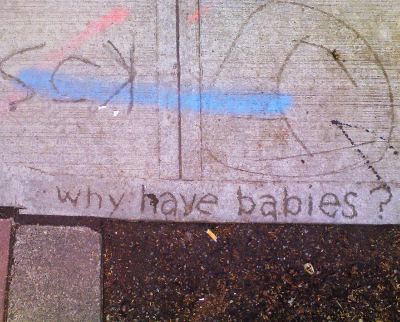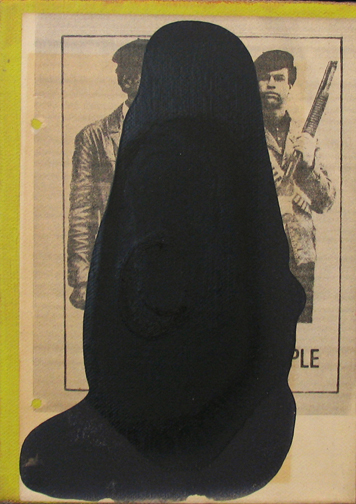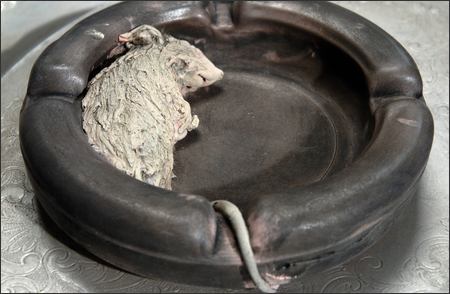I am from a family of fishermen who migrated from the South in the early 1940’s, specifically Louisiana, Texas and Florida. While they left much behind, what they brought with them was a love for being out of doors on the lakes fishing for food to feed the family and sometimes the whole neighborhood. What set us apart from the Native Americans and the Scandinavians who came before us was our ritual of fishing for bottom fish. For years after my family’s arrival in the Northwest in the 1940’s there was no concept or talk of trout or steelhead. It was catfish, crappy and perch that lived in our dreams. Hence my narrative starts with a search for night crawlers and earthworms.
Thomas, who studied at the University of Washington with Jacob Lawrence and remained a life-long friend, naturally leans toward a myth-making narrative.
Working with egg tempera on paper, she creates dense worlds in which wind and water embrace the figures that are rocking in and spilling out of small boats. Her color tends to be chalky and somber, with moments of bright exception, such as the golden fish gleaming in the hands of a fisherman.
A small series of prints from 2006 deserve another look. In a newspaper, there would be no reason to give it. What appears in print is driven by the most basic question: Why now? Blogs lack that imperative. On a blog, what is relevant now opens to include whatever can be defended.
 Thomas’ parents drowned in a fishing accident in 1988. While many of her paintings and prints appear to allude to the tragedy, there is a calm, benign atmosphere overall.
Thomas’ parents drowned in a fishing accident in 1988. While many of her paintings and prints appear to allude to the tragedy, there is a calm, benign atmosphere overall.
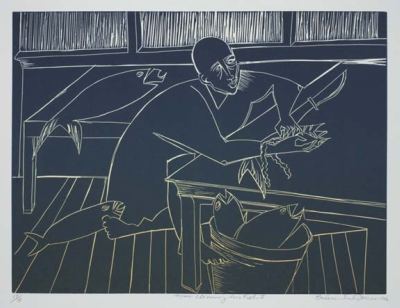 Her figures aren’t drawn from the world of flesh and blood and can’t suffer its reverses. Thomas is not painting her parents’ story, she’s recreating it and giving it a different ending, a life everlasting.
Her figures aren’t drawn from the world of flesh and blood and can’t suffer its reverses. Thomas is not painting her parents’ story, she’s recreating it and giving it a different ending, a life everlasting.
 Thomas is represented in Seattle by the Francine Seders Gallery.
Thomas is represented in Seattle by the Francine Seders Gallery.



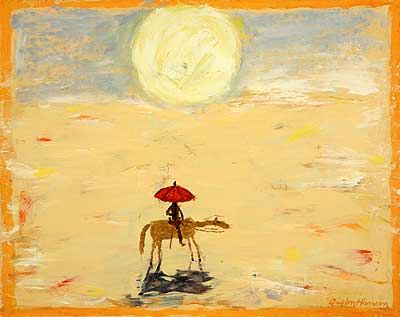 Now 89, Hansen continues to be a bright spot in the art terrain of rural Eastern Washington. He moved there in 1957 to take a teaching job Washington State University and give up on getting anywhere in the art world.
Now 89, Hansen continues to be a bright spot in the art terrain of rural Eastern Washington. He moved there in 1957 to take a teaching job Washington State University and give up on getting anywhere in the art world. 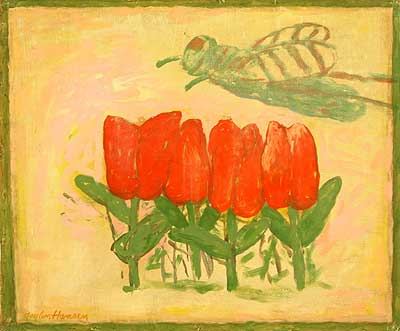 The act of giving up, he said later, freed him to fully inhabit his own experience. His new work on view at the
The act of giving up, he said later, freed him to fully inhabit his own experience. His new work on view at the 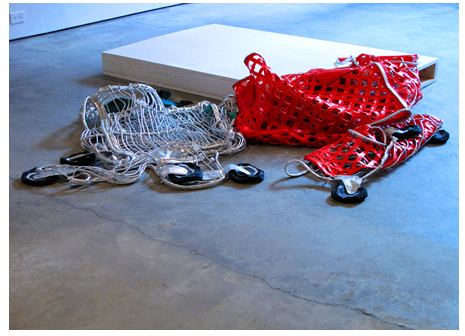 reminds me of an earlier series.
reminds me of an earlier series.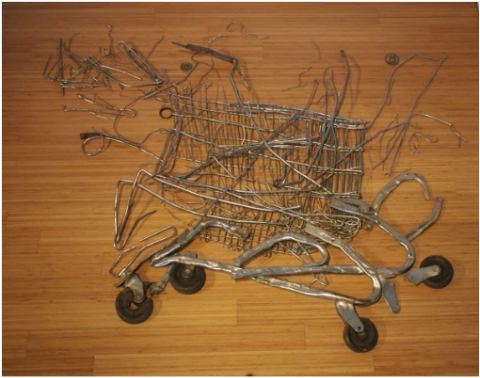 Next to Holstad’s silky fabrications, Bruch’s 93 Pieces is raw evidence of the poverty, bad luck, mental illness, alcoholism and outcast eccentricity that collided with the Reagan administration to produce the homelessness we now take for granted.
Next to Holstad’s silky fabrications, Bruch’s 93 Pieces is raw evidence of the poverty, bad luck, mental illness, alcoholism and outcast eccentricity that collided with the Reagan administration to produce the homelessness we now take for granted. 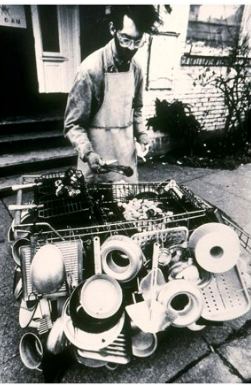 Roller Roaster
Roller Roaster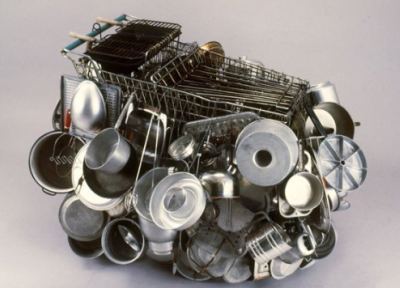 Bruch’s Attention Shoppers (1985) is sealed with burnished steel. Shake it and it
Bruch’s Attention Shoppers (1985) is sealed with burnished steel. Shake it and it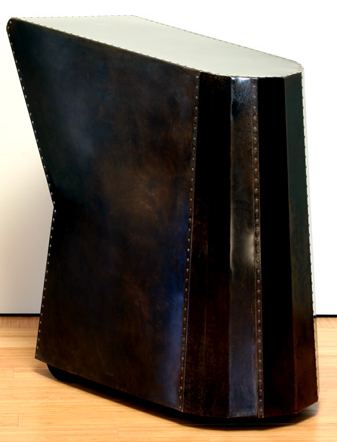 The artist moved on without changing the core of who he is, a formalist with a tragic view of the world.
The artist moved on without changing the core of who he is, a formalist with a tragic view of the world.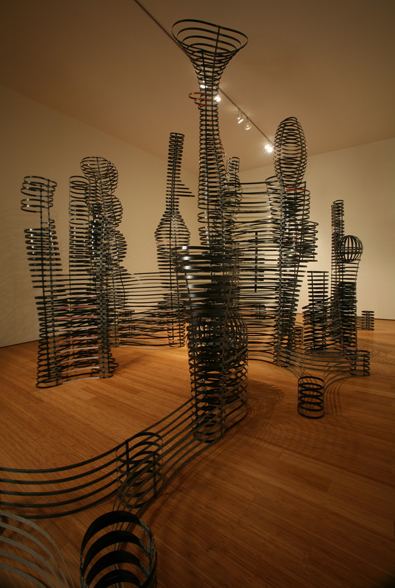 With light streaming under garbage lids, How Did I Get Here? from 2001 features sentences spit out through what look like bullet holes, humor and grace mastering the rage of a living in a spiritual war zone.
With light streaming under garbage lids, How Did I Get Here? from 2001 features sentences spit out through what look like bullet holes, humor and grace mastering the rage of a living in a spiritual war zone.  The thin, scalloped sheets of aluminum he used for Mutterhulse (2007) are typical of ones found wrapping fast food drive-bys, offices on used car lots, churches for the video Christ in strip malls that are here today, gone tomorrow. The piece a tribute to his German mother, once a musician but reduced in later life to sitting in a chair staring out the window, unsure of her own identity. Hunkered down around itself, it features a spiral-shaped top, a place for energy to go after it leaves the shell of the body.
The thin, scalloped sheets of aluminum he used for Mutterhulse (2007) are typical of ones found wrapping fast food drive-bys, offices on used car lots, churches for the video Christ in strip malls that are here today, gone tomorrow. The piece a tribute to his German mother, once a musician but reduced in later life to sitting in a chair staring out the window, unsure of her own identity. Hunkered down around itself, it features a spiral-shaped top, a place for energy to go after it leaves the shell of the body. Pattern reveals the beauty of the physical world. Roofscape, 2008, mahogany plywood, paper tape, 48 x 33 x 16″
Pattern reveals the beauty of the physical world. Roofscape, 2008, mahogany plywood, paper tape, 48 x 33 x 16″ Represented in Seattle by
Represented in Seattle by 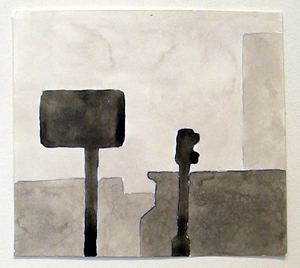
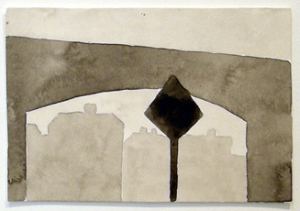
 the xmas lights are what make it.
the xmas lights are what make it.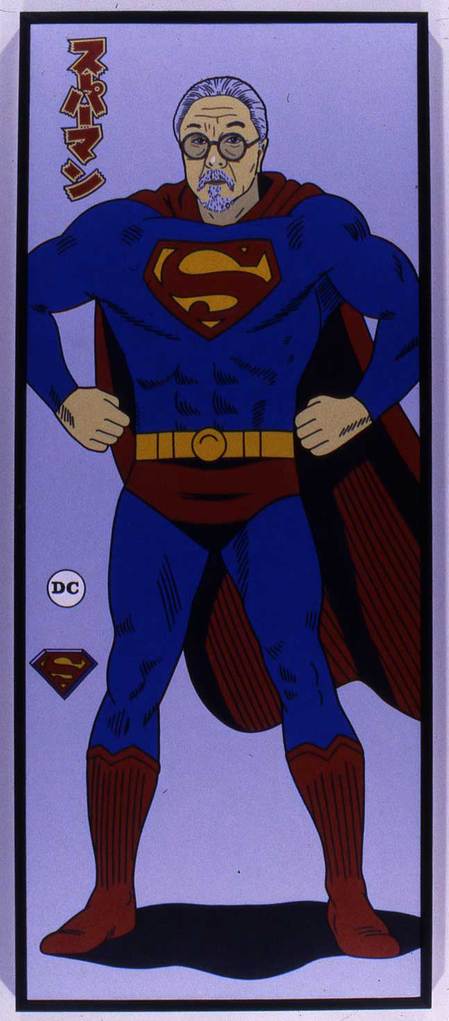
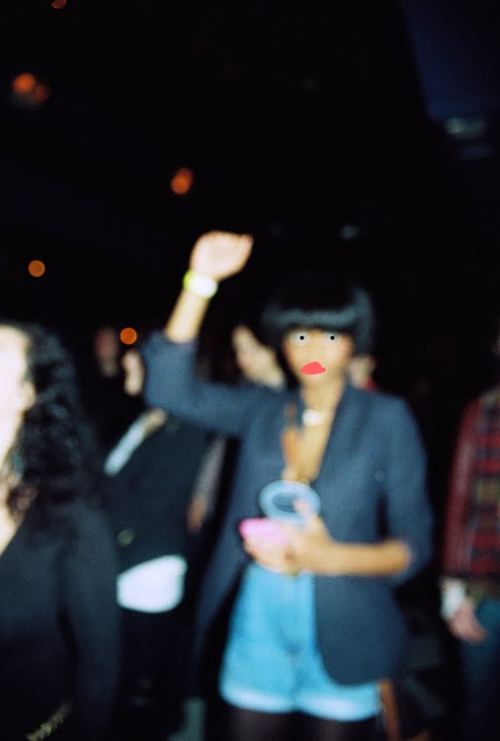
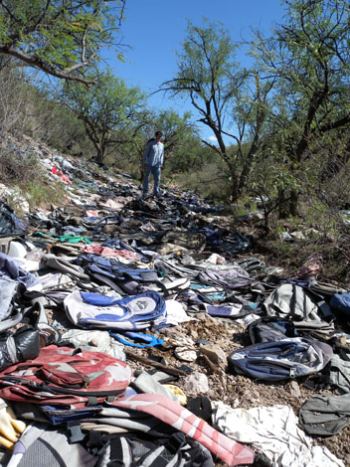 Shoes are especially ominous. Where do they go without them?
Shoes are especially ominous. Where do they go without them?